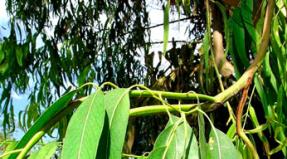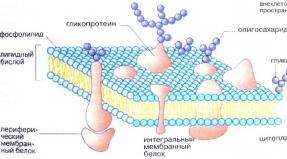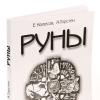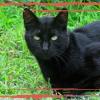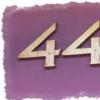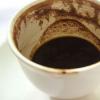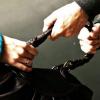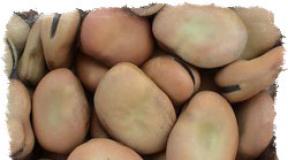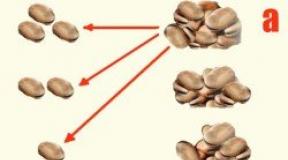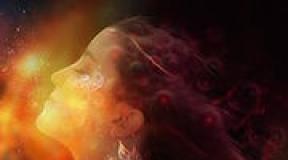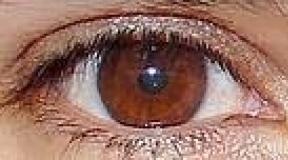Massage for hypertension. Moshkov V.N. Therapeutic physical culture in the clinic of nervous diseases Literature used by the lecturer in preparation for the lecture
3rd ed. - M .: Medicine, 1982. - 224 s.V. N. Moshkov - member. - corr. USSR Academy of Medical Sciences, Professor, Consultant of the Department of Physiotherapy and Medical Control, TsOLIUv.
The monograph is the third revised edition of the book "Therapeutic Physical Culture in the Clinic of Nervous Diseases” (the second edition was published in 1972). It has been expanded and supplemented with new provisions and modern literature data, contains theoretical and practical material on the use of therapeutic physical culture in complex therapy people with illnesses and injuries nervous system. In the general part of the book, materials are systematized, which are the basis for the correct construction of any particular method of therapeutic physical culture. They include general provisions method, fundamental issues of methodological order, content and role therapeutic gymnastics in water, mechanotherapy, occupational therapy and massage in the treatment of patients with diseases and injuries of the nervous system. Data on the mechanism of therapeutic physiological action are also summarized. exercise. In a special part of the book, private methods of using therapeutic physical culture for diseases and injuries of the brain (in the early and late periods of hemiparesis), lesions spinal cord, as well as the peripheral nervous system (radiculitis, polyradiculoneuritis, neuritis of the facial nerve and injuries of the peripheral nerves). In separate chapters, the use of therapeutic physical culture is given in violation of the function of the vestibular apparatus in concussion and concussion of the brain, in diencephalic disorders, in neurosis (neurasthenia, psychasthenia, hysteria) and some progressive systemic diseases of the nervous system. Each chapter includes a clinical and physiological rationale and practical recommendations for the use of therapeutic physical culture in the complex therapy of patients. The monograph is intended for neuropathologists, physiotherapists, balneologists, specialists in the field of physical therapy. Content:
Preface to the third edition.
Preface to the second edition.
Preface to the first edition.
General provisions on the use of therapeutic physical culture in the clinic of nervous diseases.
Therapeutic physical culture in brain lesions.
Therapeutic physical culture in violation of the function of the vestibular apparatus.
Therapeutic physical culture in lesions of the spinal cord.
Therapeutic physical culture in diseases and injuries of the peripheral and nervous system.
Therapeutic physical culture in neuroses.
Therapeutic physical culture in some progressive systemic diseases of the nervous system.
Bibliography.
Under the influence of massage in patients with diseases of the cardiovascular system, the indicators and state of vascular tone change, the value blood pressure. With adequate influences and the use of special massage techniques in accordance with pathogenetic and clinical features disease, favorable changes occur.
Massage technique (V. N. Moshkova) for patients with hypertension.
Under the influence of the course of treatment with massage: the head, the back of the head, favorable changes in clinical indicators were noted: the heaviness in the occipital region, in the forehead, eye sockets decreased; decreased or disappeared headache, dizziness.
The procedure should be carried out in a separate room in silence.
- The starting position is sitting, leaning on the back of a chair and relaxing the muscles. The massage therapist stands behind the patient. Apply two main techniques "stroking" and "kneading", alternating them.
Massage begins with stroking and kneading the muscles of the interscapular region along the spine and from top to bottom with the palm of your hand.
- Massage the shoulder girdle from the neck and spine to the shoulders, shoulder blades.
- Then they knead the areas of the mastoid process and the occipital protuberance with II and III fingers. All these techniques alternate with stroking the back of the neck and shoulder girdle in the direction from top to bottom and outward to shoulder joint and axillary fossa.
- When massaging the scalp, kneading I II, IV with fingers is performed from the occiput to the crown of the head.
- After that, the patient throws his head back, leaning on the massage therapist's chest. In this position, the frontal and temporal regions are massaged; start with stroking with one or two fingers along the middle line of the forehead to the scalp, then to the temples with four fingers or palms. Knead with all fingers the forehead, supraorbital and infraorbital arches up and to the sides.
- Then the temporal regions are massaged with the base of the palm from the eyes to the back of the head. The circumference of the eye sockets is kneaded at the top with the fingertips, and punctured on the lower arc.
- Then again they stroke with rake-like techniques and in the same sequence knead the forehead with divorced II, III, IV, V fingers, hairy part head towards the back of the head.
- In conclusion, the neck, shoulder girdle and interscapular region are again massaged. The areas of the mastoid processes between the eyebrows and the middle line of the parietal region are especially painful. Apply light stroking and vibration.
The duration of the procedure is from 10 to 15 minutes. The course of treatment is 20 - 24 procedures.
Massage of the abdomen with obesity improves blood circulation in abdominal cavity, decrease congestion and reflex lowering of blood pressure. In addition, massage improves motor-digestive function.
- The starting position during the procedure, the patient lies on his back. The impact on the muscles is carried out by stroking and kneading according to the method generally accepted for this area.
- Then the patient bends his knees, rests his feet on the couch, after which they begin to massage the intestines. Apply shallow kneading with four fingers (pressing on them from above with the other hand) on the left side of the abdomen from top to bottom (along the colon), 6-8 times.
- After that, the right half of the abdomen is massaged from the bottom up towards the ascending and transverse colon and the reception is completed with a massage of the left half of the abdomen. Kneading alternate with stroking, vibration. After vibration, stroking is applied in a clockwise direction.
- Then, bringing the hands under lumbar region, shake 3-5 times and complete the procedure by stroking the abdomen. The duration of the procedure is 15 minutes.
There is a beneficial effect of massage according to the Mashkov method in combination with
... “We stand on the threshold of a great golden age when science, reason and even religion will triumph in the search for truth. Hindus call it Krita-yuga, astronomers call it the Age of Aquarius, Jews call it the coming of the Messiah, Theosophists call it the New Age, Cosmologists call it the Harmonic Convergence. And the ancients even indicate the date: December 21, 2012, according to the Mayan calendar "... (Dan BROWN, The Lost Symbol.)
Doctor of Historical Sciences Gennady Aiplatov studied the works of a little-known Russian prophet, who accurately predicted the fate of Russia in 1910
BOOK OF FATE
- The name of General Valentin Moshkov, a full member of the Russian Geographical Society, coordinator of the Society of Archeology, History and Ethnography at the Imperial Kazan University, was not included in modern encyclopedic dictionaries and reference books, but his last work can truly be called prophetic,
- says the doctor historical sciences, professor of the department national history Mari state university, Honored Worker of Higher Education of the Russian Federation Gennady Aiplatov.
- We are talking about a two-volume fundamental study published in 1907-1910 in Warsaw "A new theory of the origin of man and his degeneration, compiled according to the data of zoology, geology, archeology, anthropology, ethnography, history and statistics"
(T. 1. The origin of man. - Warsaw. 1907; T. 2. Mechanics of degeneration. 1912 - the beginning of the "Iron Age". - Warsaw, 1910). This study is a real book of the fate of our Fatherland, because in it Moshkov acts as a “Russian Nostradamus”, who predicted the main move Russian history until 2062.
As can be seen from the title of the book, in his forecast Moshkov did not proceed from "revelations" received from nowhere, but relied on a solid scientific foundation.
According to the general's theory, all states and all societies, from the largest to the smallest, make a "continuous series of turns," which he called "historical cycles." Each cycle, without exception, for all nations lasts exactly 400 years. “One gets the impression,” writes Moshkov, “that after every 400 years of its history, the people return to the same place where they started. A cycle is a year of history."

|
General Moshkov, following the Hebrew, Greek and other traditions, calls the four centuries of the cycle gold, silver, copper and iron, respectively. Each cycle is divided into two equal halves - 200 years each: the first is ascending, the second is descending.
In the first half of the cycle, “the state grows and becomes stronger and exactly at the end of the 200th year reaches the maximum of its well-being, and therefore this year can be called the“ peak of the rise ”, and in the second half“ it tends to decline until it reaches the top at the end of the cycle decline.
Then the first ascending half of a new four-century cycle begins. Each of the halves of the cycle, consisting of 200 years, in turn, is divided into two centuries, differing in "its own character", and each century is divided into two half-century (50 years). The first half of each century signifies a decline and the second a rise, with the exception of the last (fourth) century representing "solid decline". In a word, according to Moshkov's scheme, throughout the entire historical cycle, ups and downs do not last more than 50 years.
CHARACTER OF TIME
- Why did Moshkov name the centuries by the name of the metals?
- He took advantage of the legends about four centuries of history found among the Greeks, Hindus and ancient Jews, - explains Gennady Nikolaevich.
- So, the 1st century, called the golden one by the Greeks, India called the age of perfection. According to Hindu tradition, "man in this age is virtuous, happy and long-lived."
The Greeks called the 2nd century the silver one, and according to Hindu tradition, “life in this century was shortened, vices and misfortunes appeared.”
The Greeks call the III century the Bronze Age, because the “terrible generation” commits grief and violence.
And the IV century was called the Iron Age by the Greeks, and the Age of Sin by the Hindus. This is a sad period. Morality has degenerated, life expectancy has shortened, there is no truth anywhere. And in biblical prophecies, in particular in Daniel, we no longer see centuries, but kingdoms: Golden, Silver, Copper and Iron.
And now let's correlate Moshkov's theoretical scheme with the concrete history of Russia.
He took the year 812 as the beginning of the first historical cycle, when the leaders of the Polyans, Ilmen Slavs, Radimichi, Krivichi and other tribes entered into an alliance, uniting their lands into the first ancient Slavic state - Kievan Rus. It turns out that in 1612 Russia began the third 400-year cycle, which will last until 2012.
Visually, the table of the history of Russia looks like this:
First cycle (812 - 1212)

Second cycle (1212 - 1612)

Third cycle (1612 - 2012)

INCREDIBLE COINCIDENCES
- Do historical facts coincide with Moshkov's predictions?
- And you judge for yourself, - suggests Professor Aiplatov. - The last section of Moshkov's book is called “The Coming Iron Age. Decline (1912 - 2012)".
Here is what he writes in 1910 (!) year:
“In two years, that is, in 1912, we are entering the Iron Age. The constant rise in the price of all essentials will intensify every year. As a result, it will be followed by the breakdown of the financial system and the indebtedness of all sections of society. Many people will die of hunger and epidemics. The people will find the alleged culprits of their misfortune in government bodies, in the wealthy classes of the population. Riots will begin, beatings of wealthy and powerful people.” And in reality, the October Revolution took place, followed by Civil War, which Moshkov also predicted!
- Judging by his table, the second half of the Iron Age - since 1962 - promises a continuous decline instead of an upswing. Why?
- Firstly, because this century completes a 400-year historical cycle. And secondly, such is the philosophy of decline according to Moshkov and the ancient treatises on which he relied in his research.
He writes: “With the onset of decline in the state, all ties weaken, starting with the highest. First of all, love for the government disappears, after it - love for the motherland, then for one's fellow tribesmen, and, finally, even affection for one's family members disappears.
What follows is hatred of the government in general, combined with an irresistible desire to destroy it. Remember the late 1980s and early 1990s, when our country was the leader in the number of divorces, abortions, alcoholism, drug addiction, and the government was enemy number one for the people.
ANATOMY OF DECLINE
Further, General Moshkov characterizes in detail the behavior of the government, the masses during the period of decline, at the beginning of which “the main means of struggle are objectively congresses and diets, debates and fights”, and at the end of it “riots, revolutions and endless internecine wars, accompanied by the ruin of the country and beating its inhabitants."
(Remember the fights even in parliament, political infantilism, Afghanistan, the Georgian-Abkhazian conflict, Chechnya. - Ed.)
(A clear prediction of the collapse of the USSR. - Ed.)
“At this time, treason reigns in all its forms. The fatherland is sold both wholesale and retail, if only there are buyers for it.
(Indeed, large domestic enterprises were sold to foreign firms. - Ed.)
Culture and art are degrading: "The study of sciences is reduced to cramming and to the pursuit of diplomas that give advantages in the struggle for existence."
(In the 1990s, Russia ranked last in the world in terms of education. - Ed.)
“Decadentism and pornography are bursting into the literary realm as something new.”
(Oh! We had enough of this stuff over the edge in the mid-1990s - Ed.)
“People become addicted to all kinds of games, especially gambling, indulge in drunkenness, drug use, revelry and debauchery.”
(What is an accurate description of the pastime of the majority of the inhabitants of Russia at the end of the 20th and beginning of the 21st centuries. - Ed.).
- I think that these extracts from Moshkov's book ruthlessly reveal the anatomy of the recent decline in our country, - sums up the professor. - And remember that all this was described in 1910! But it looks as if the author of the forecast is our contemporary.
|
|
OH WILD WORLD!
- According to Moshkov's forecasts, in 2012 a new Golden Age will begin in Russia. Will it be better than the previous one?
- Remember that the first half of the Golden Age 1612 - 1662 began with a decline. And the current new century will come from its worst half, so the real rise will be only in 2062.
But it is better to live in the decline of the Golden Age than the Iron Age.
Here are the changes we are expecting:
“Enmity between people disappears and is replaced by harmony and love. Parties no longer have any meaning and therefore cease to exist.
Civil strife and revolutions recede into the realm of legends, since a person of upsurge is peaceful. Agriculture, cattle breeding, industry, and trade begin to flourish. In science, the people are in a hurry to catch up with their civilized neighbors, from whom they lagged far behind during the decline.
Officials become honest. The army is being reformed and is acquiring invaluable qualities. The citizens of the country are bound together by a common patriotism. The government connects with the people with sincere love.
... Some kind of communism!
QUOTE ON THE TOPIC
“We stand on the threshold of a great golden age when science, reason and even religion will triumph in the search for truth. Hindus call it Krita-yuga, astronomers call it the Age of Aquarius, Jews call it the coming of the Messiah, Theosophists call it the New Age, Cosmologists call it the Harmonic Convergence. And the ancients even indicate the date: December 21, 2012, according to the Mayan calendar.
Valentin Moshkov was born on March 25 (April 6), 1852. He came from the nobility of the Kostroma province. After graduating from the Second St. Petersburg Military Gymnasium on August 5, 1868, he entered the service as a cadet at the Second Konstantinovsky Military School. On August 24 of the same year, he was transferred to the Mikhailovsky Artillery School, after which, on August 11, 1871, V. Moshkov was promoted to second lieutenant and enlisted to continue his service in the 37th artillery brigade. In the service, he showed zeal and great interest. In less than 3 months he was promoted to lieutenant. On June 17, 1873, Valentin Moshkov was seconded to the St. Petersburg Fortress Artillery to listen to lectures at the Imperial Mining Institute. On December 28 of the same year, he was promoted to staff captain.
On July 17, 1875, V. A. Moshkov was appointed to the position of junior artillery inspector at the Olonets Mining Plants. Valentin Moshkov participated in the Russian-Turkish war of 1877-1878. On December 26, 1877, he was promoted to captain.
On January 27, 1880, V. A. Moshkov received the position of junior artillery inspector of the Main Artillery Directorate, leaving at the Olonets Mining Plants.
Later, V. A. Moshkov was transferred to the Volga-Kama region. On June 12, 1888, he became the senior artillery receiver of the Main Artillery Directorate. Presumably, in 1892 Moshkov was transferred from Kazan to Warsaw. November 12, 1894 he was awarded the rank of lieutenant colonel, May 14, 1896 - colonel. On December 6, 1905, he became a major general.
On August 22, 1913, V. A. Moshkov submitted a letter of resignation "due to domestic circumstances." As evidenced by the materials of the report on the General Staff of September 19, 1913, he was promoted to lieutenant general "with dismissal from service, with uniform and pension". After 1913, traces of V. A. Moshkov are lost.
In 1921 V. A. Moshkov emigrated to Bulgaria. He died on November 19, 1922 in Sofia.
He was married to the daughter of a Petrozavodsk merchant Alexandra Ilyina, had children: sons Dmitry and Vladimir, daughters Yulia and Zinaida.
Valentin Mashkov prediction to the world
source - http://kp.ru/daily/24428/597417/ Svetlana KUZINA — 22.01.2010
Read also...
- Other names: sleepy dope, belladonna, wild berry, wild cherry, rubuha
- Other names: sleepy dope, belladonna, wild berry, wild cherry, rubuha
- Aspartic acid mechanism of action and regimen of administration L aspartic acid chemical properties
- Symptoms and diagnosis of Dupuytren's disease - treatment, surgery and rehabilitation course Mkb 10 Dupuytren's contracture treatment terms

